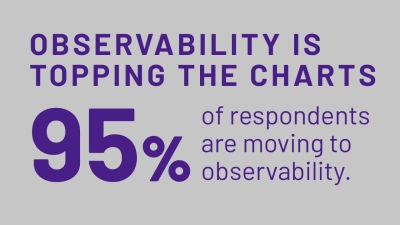VIAVI has announced the release of The 16th Edition State of the Network Study. The latest report identified the critical aspects of Continuous Threat Exposure Management (CTEM) solutions and its evolution in the era of security-focused observability.
Network and security teams are forced to work with age-old IT frameworks that can’t accommodate the modern observability and remediation tools. This results in expansive IT operations costs, and reduced trust in the existing cloud-native applications. The increase in IT costs is inevitable, but when planned well, this cost can be easily justified through strategic accomplishment of IT tasks and scaling the existing IT stacks. At least hypothetically, it is possible to close the remediation gap by bringing together Network and Security Management applications within the Continuous Threat Exposure Management (CTEM) framework.
VIAVI announced the release of its 2024/25 State of the Network study in partnership with Enterprise Strategy Group™ (ESG) to describe how organizations are better prepared against disruptive incidents. The research, involving 754 respondents from 10 countries, focuses on the evolution of network performance and security tools over the past 16 years, assessing their impact on the observability and security posture of enterprise organizations.

According to the report, organizations with a formal observability strategy are 3.5x more likely to detect disruptive incidents quickly compared to those without such a strategy. This approach not only shortens incident detection times but also brings additional benefits, such as enhanced security (83%), faster product/service advancements (82%), and improved compliance (78%).
Summary of key findings:
- Reduction in Incident Detection Time: Organizations with a formal observability strategy are 3.5x more likely to report significantly shorter times to detect disruptive incidents.
- Enhanced Security: 83% of companies with observability strategies experience enhanced security.
- Improved Compliance: 78% of organizations maintain better compliance with a formal observability strategy.
- Critical Need for CTEM: 88% of organizations report a “critical need” to improve their threat management capabilities.
Network observability provides deep insights into network behavior, performance, and health by collecting, analyzing, and presenting data, enabling administrators to understand and manage the network in real time.
True network observability embraces and leverages all network data sets, including flow data, packet data, and metrics. Unlike traditional monitoring, which primarily focuses on identifying and alerting on predefined issues, observability enables IT teams to proactively detect, understand, and resolve incidents in real-time.
By adopting an observability strategy, organizations can proactively manage network performance, improve problem resolution, and maintain higher levels of user satisfaction.
The report also underscores the critical need for Continuous Threat Exposure Management (CTEM), with 88% of organizations highlighting an urgent need to improve their threat management capabilities.
CTEM is an emerging strategy that systematically evaluates and prioritizes risks, allowing organizations to allocate resources more effectively and focus on the most significant threats. By integrating threat exposure management with attack surface management, CTEM helps organizations enhance their security posture and operational resilience, ensuring they can proactively manage and mitigate evolving threats. CTEM programs are now gaining traction, ranking behind patch management and vulnerability assessments only among current methods for managing threat exposure.
“Organizations are increasingly recognizing the transformative impact of observability on network management and security,” said Chris Labac, Vice President and General Manager, Network Performance and Threat Solutions, VIAVI.
Chris added, “This report demonstrates a clear trend toward network observability, not only as a way of enhancing security, achieving compliance objectives, and detecting incidents, but as a key driver of business.”
“As discovered by VIAVI and ESG, the state of the network is ever more vital to business success, even as it is continuously stretched, evolved, clouded and threatened,” said Jim Frey, Principal Analyst, Networking, Enterprise Strategy Group.
Jim added, “Organizations are recognizing the challenges posed by sprawl in monitoring tools and increasingly complex hybrid network architectures, and those making the move – strategically or otherwise – to network observability are seeing significant improvements. In parallel with operational advantages, this move empowers organizations to pursue convergence of observability and security and enable important new strategies such as continuous threat exposure management.”


